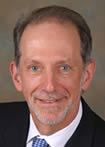
“It is the oncology nurse whose ‘fingerprints’ are on the entire matrix of therapies,” said Seliza Mithchell.
A keynote presentation on “fingerprints†might be more suited to a police convention than an oncology nursing symposium. That is unless Selinza Mitchell is the speaker. Mitchell, a nurse educator and presenter was the keynote speaker at the third annual Winship Oncology Nursing Symposium, held March 18 and 19 at the Evergreen Conference Center in Stone Mountain, Georgia.
Mitchell’s presentation focused on the impact oncology nurses have on the hundreds of patients and families they touch, both literally and figuratively. It is the oncology nurse whose “fingerprints†are on the entire matrix of therapies, from administration of today’s latest targeted-therapy drugs to helping patients and families navigate an increasingly complex health care system.
That concept also formed the basis of many of the discussion groups that were part of the symposium. “The entire model of care delivery is changing,†says Amelia Langston, MD, professor of Hematology and Medical Oncology at the Winship Cancer Institute. “Care delivery is more of a team approach and is less physician-centered. Therefore there is great interest in the expanding role of nurses, nurse practitioners, and physician assistants.â€

Amelia Langston presenting at the Winship Oncology Nursing Symposium
The Winship Oncology Nursing Symposium has grown in three short years into one of the most informative and influential among this growing market of nursing continuing education opportunities. Among the topics covered in this year’s meeting were cancer genetics, image-guided medicine, minimally invasive treatment, disease-specific topics and the expanding role of non-physician providers against the backdrop of health care reform.
“The health care system is demanding cost effective, clinically relevant continuing education programs in nursing and specifically in oncology nursing,†says Joan Giblin, MSN, FNP, a course director for the symposium and Manager of Patient Access at Winship. “Offering a high quality, regional program that can provide the latest information on advanced nursing practice, research, and other issues is central to meeting that need.â€
In addition to Joan Giblin, course directors for the event were Deena Gilland, RN, MSN, Director of Nursing at Winship, and Kevin Schreffler, RN, MSN, Clinical Nurse Specialist at Winship.







![Kirch[1] Darrell G. Kirch, MD](http://www.emoryhealthsciblog.com/wp-content/uploads/2009/11/Kirch1-150x150.jpg)



